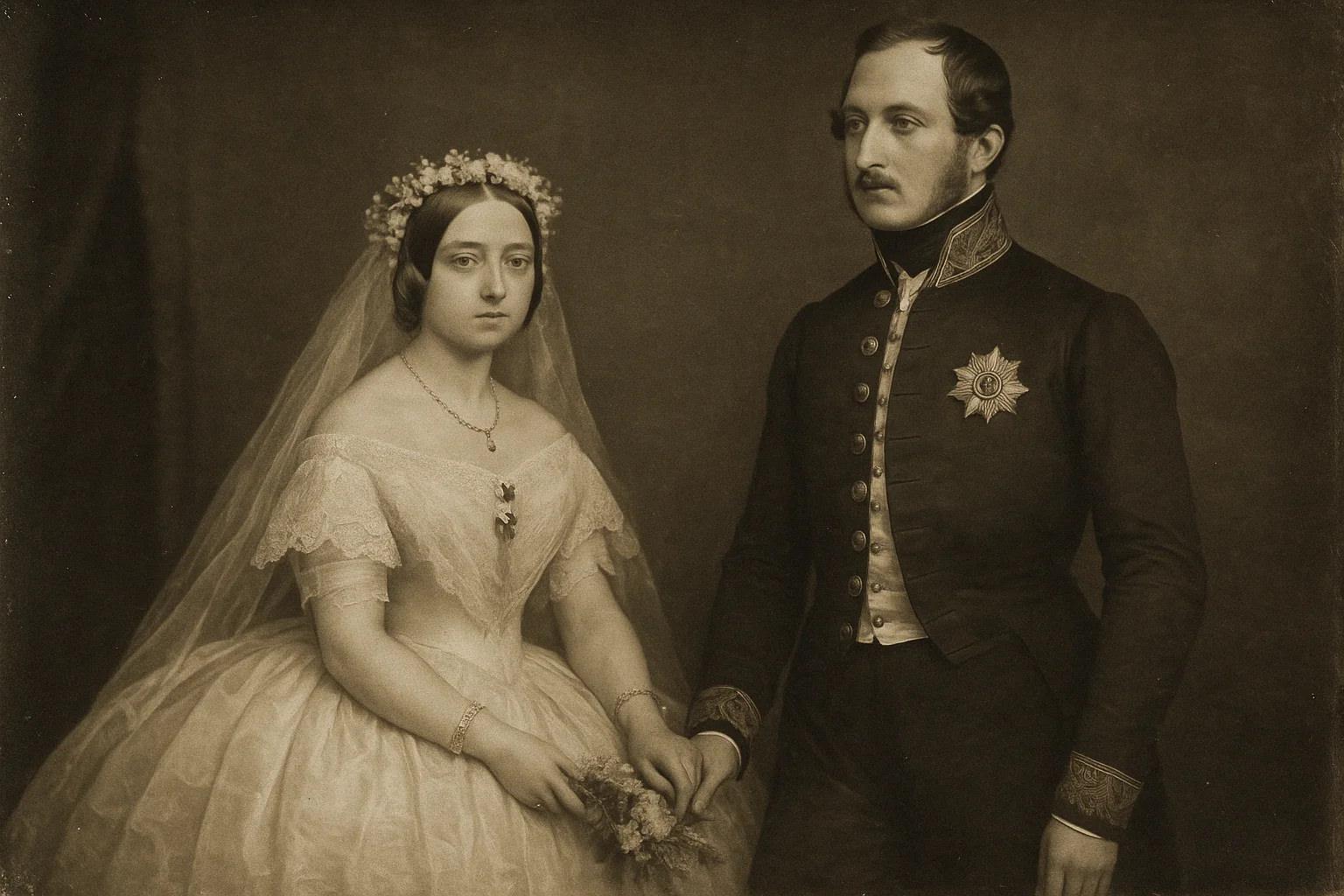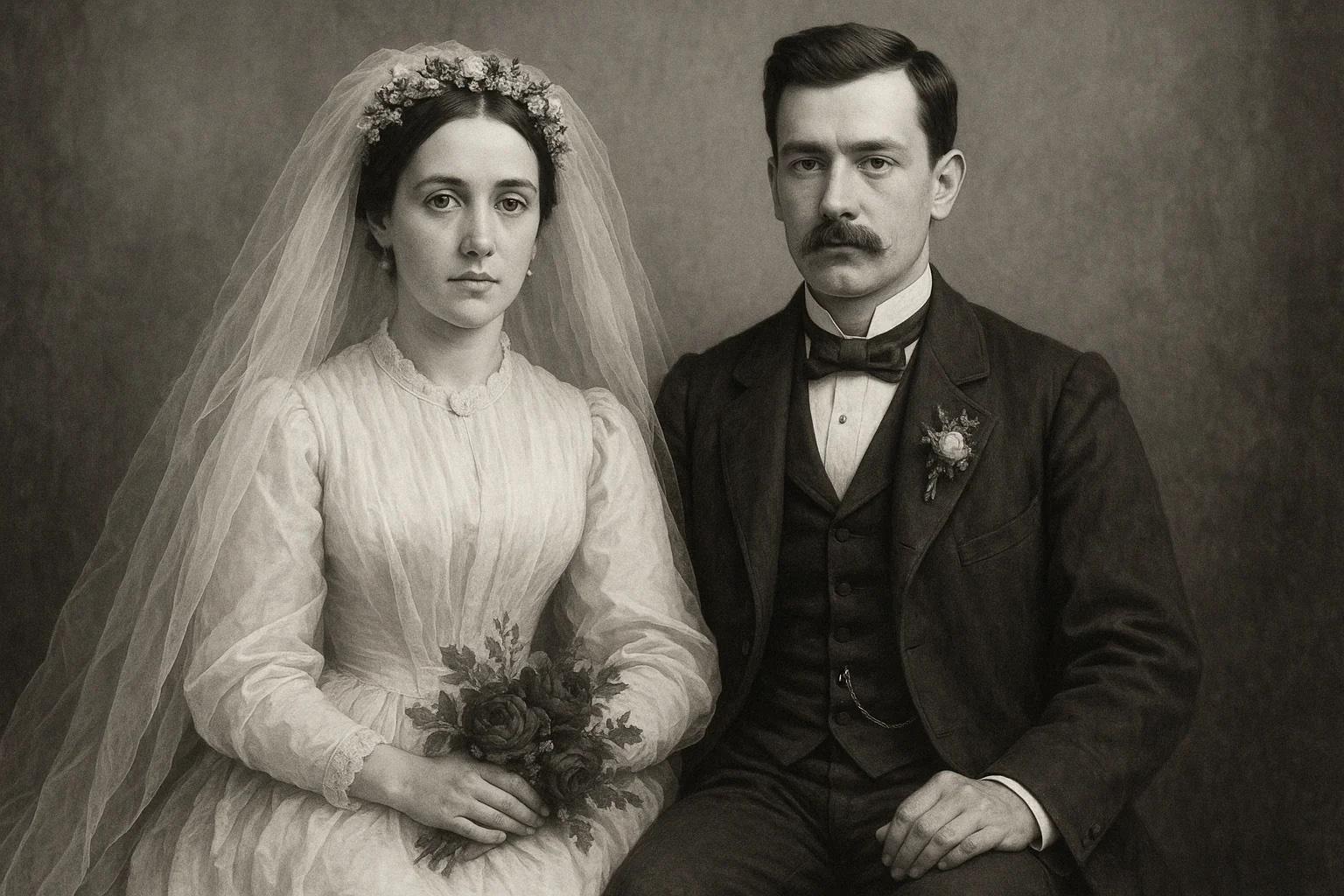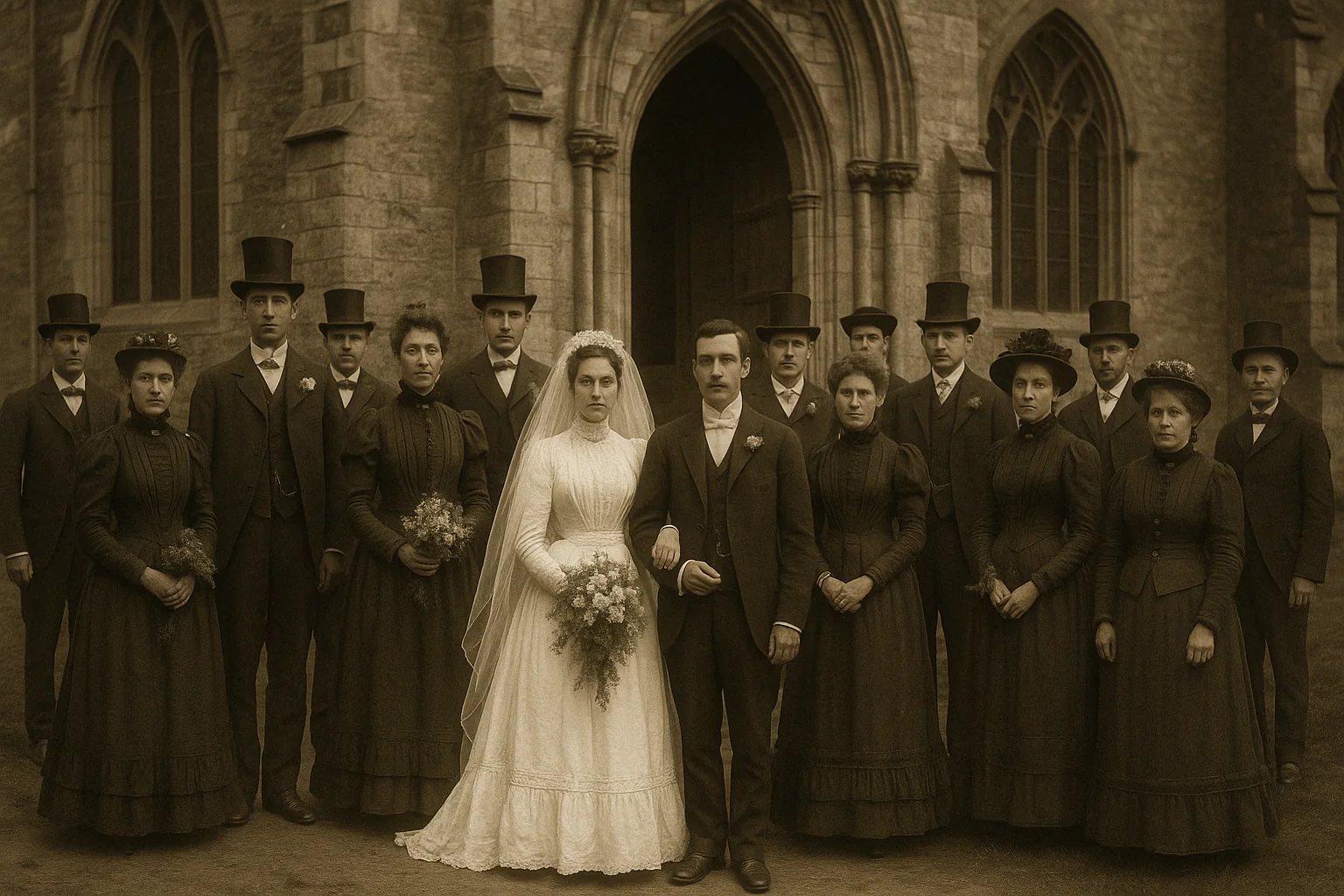The very first wedding photographs weren’t taken at weddings—and the people in them didn’t even smile. But they marked the beginning of a visual legacy we’re still building today.
While wedding photography today is dynamic, emotional, and ubiquitous, its origins were quiet, stiff, and rare. In fact, the earliest examples weren’t shot during the wedding at all—but after the fact, in studios, by professionals with limited tools and long exposure times.
Here’s a look back at how the first wedding photographs were made, who appeared in them, and why they mattered then—and still matter now.

The First-Ever Wedding Photograph (1840): A Royal Beginning
The earliest known photograph of a wedding couple dates to 1840, and it featured none other than Queen Victoria and Prince Albert.
- The image is believed to be a daguerreotype taken after their wedding—not during.
- Queen Victoria wore her iconic white dress, setting a trend still followed today.
- The photo itself was never intended for public release—but its influence was enormous.
This image marked the earliest visual record of a modern wedding—and helped ignite a fascination with documenting marriage.
Mid-1800s: Studio Portraits for the Wealthy
As photography became more accessible in the 1850s–1870s, elite couples began sitting for formal wedding portraits:
- These were done in photographers’ studios, typically after the wedding.
- The process was slow: subjects had to hold still for up to 30 seconds or more.
- Smiles were rare—not just because of the exposure times, but because formality and seriousness were the style of the time.
- Images were printed on tin, glass, or metal plates, making them fragile and expensive.
The wedding portrait was a status symbol, signaling that a couple could afford this new and luxurious service.
Late 1800s: The Expansion of Wedding Portraiture
By the 1880s–90s, as camera technology improved:
- Wedding portraits became slightly more common among the emerging middle class.
- Still, photographs were typically of the couple only—not the ceremony, guests, or celebration.
- Attire was often formal black or dark tones, even for brides.
- The focus was on symbolic composition: unity, symmetry, and virtue.
Wedding photography was still rooted in ritual and representation, not storytelling.

What Early Wedding Photos Tell Us
These first images, though few in number, give us insight into:
- How marriage was understood: solemn, sacred, and socially significant
- Who had access to photography in its early years
- The evolution of body language and emotional expression in portraiture
- The importance of the wedding as a moment worth documenting, even before the concept of candid coverage existed
They also serve as visual records of fashion, class, and gender roles from their time.
Preserving Early Photographs: A Fragile Legacy
Many early wedding photos exist only in family archives, museums, or historical societies.
- These prints are delicate and light-sensitive, often stored in boxes or behind glass.
- Digitization efforts are helping preserve them—but many remain unnamed, undated, and unshared.
- For descendants, these images are often the first known picture of a family lineage.
Photographers today stand on the shoulders of these pioneers—even if their work looked nothing like the weddings we see now.

The First Photo Taken At a Wedding?
It wasn’t until the late 1800s that photographers began attending ceremonies:
- Even then, it was often only to photograph posed groups outside the church.
- True candid documentation wouldn’t arrive until the early-to-mid 20th century.
- But the shift from post-wedding portrait to on-site coverage marked a pivotal change: photography became a living part of the wedding day, not just a record after the fact.
That change would reshape weddings forever.
Related Reading in This Series:
- The History of Wedding Photography: How We’ve Captured Love Through the Ages
- From Posed to Candid: How Wedding Photography Styles Evolved
- Film vs. Digital: A Love Story in Two Formats
- The Rise of the Wedding Photographer as Artist and Brand
- How Wedding Photography Changed with the Internet (and Instagram)
- The Role of Wedding Photography in Cultural Memory
- New Frontiers: Drone Photography, AI Editing, and the Future of the Craft